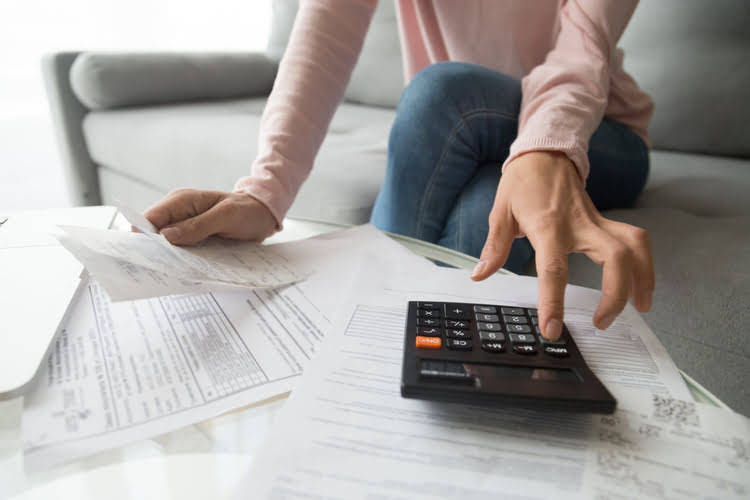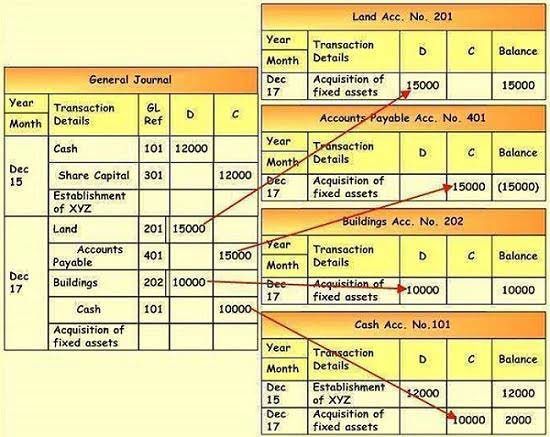Is Accumulated Depreciation an Asset? How to Calculate It?

Choosing the most suitable depreciation method is essential, as it impacts the timing and QuickBooks amount of depreciation charges and, ultimately, the financial statements. The accelerated depreciation method, such as the double-declining balance, allows for higher depreciation earlier than the straight-line method. Accumulated depreciation refers to the total amount of depreciation charged to the cost of a fixed asset since the asset was acquired.

Informed Business Decisions

Buildings, machinery, furniture, and fixtures wear out, computers and technology devices become obsolete, and they are expensed as their value approaches zero. Accumulated depreciation is the total value of the asset that is expensed. The half-year convention is a unique accounting rule where businesses recognize half a year’s depreciation in the first and last years of an asset’s life. This approach is practical when an investment is purchased or disposed of mid-year. For example, if a piece of machinery is expected to produce 100,000 units over its life, depreciation is calculated based on the number of units it makes in a given year. Straight-line depreciation is the most straightforward and commonly used method.
Selling a Depreciable Asset
You can find more information on depreciation for income tax reporting at The double-declining-balance (DDB) method, which is also referred to as the 200%-declining-balance method, is one of the accelerated methods of depreciation. DDB is an accelerated method because more depreciation expense is reported in the early years of an asset’s life and less depreciation expense in the later years. To introduce the concept of the units-of-activity method, let’s assume that a service business purchases unique equipment at a cost of $20,000. Over the equipment’s useful life, the business estimates that the equipment will produce 5,000 valuable items. Assuming there is no salvage value for the equipment, the business will report $4 ($20,000/5,000 items) of depreciation expense for each item accumulated depreciation definition produced.
- With accounting for depreciation, financial reports would overstate the value of assets, leading to correct data for stakeholders, including investors and management.
- Accumulated depreciation measures the overall change in the value of that car since its purchase.
- When the goods are in inventory, some of the depreciation is part of the cost of the goods reported as the asset inventory.
- As a result these items are not reported among the assets appearing on the balance sheet.
- Note that the estimated salvage value of $8,000 was not considered in calculating each year’s depreciation expense.
- Since the balance is closed at the end of each accounting year, the account Depreciation Expense will begin the next accounting year with a balance of $0.
- Accumulated depreciation is the sum of the depreciation recorded on an asset since purchase.
Accounting Adjustments
It is a contra-asset account, which is reported as a deduction from the asset’s original cost on the balance sheet. The amounts spent to acquire, expand, or improve assets are referred to as capital expenditures. The amount that a company spent on capital expenditures during the accounting period is reported under investing activities on the company’s statement of cash flows. At the end of 10 years, the contra asset account Accumulated Depreciation will have a credit balance of $110,000. When this is combined with the debit balance of $115,000 in the asset account Fixtures, the book value of the fixtures will be $5,000 (which is equal to the estimated salvage value). In this example, the depreciation will continue until the credit balance in Accumulated Depreciation reaches $10,000 (the equipment’s depreciable cost).
Example of the straight-line method
- This means that the asset’s net book value is $500,000 (calculated as $1,000,000 purchase price – $200,000 impairment charge – $300,000 accumulated depreciation).
- On your company balance sheet, an accumulated depreciation account is recorded as a contra asset account in the asset section to your fixed asset current book value.
- Units refer to the total amount of units of output you expect from the asset (for a vehicle, you might expect to drive 100,000 miles, so you would have 100,000 total units.
- Accumulated depreciation refers to the total amount of depreciation incurred to date.
- A significant change in the estimated salvage value or estimated useful life will be reported in the current and remaining accounting years of the asset’s useful life.
Accumulated Depreciation is a cornerstone in the realm of accounting and finance. It serves as a barometer for assessing the value of a company’s assets and plays a significant role in financial reporting and taxation. By understanding this vital metric, businesses and investors can make more informed decisions in the complex world of finance. While depreciation is recorded as an expense on the income statement, it doesn’t involve an outflow of cash. High Accumulated Depreciation can significantly lower the book value of assets on a company’s balance sheet. While this is an accurate reflection of an asset’s wear and tear, it might lead to undervaluation, potentially affecting investment decisions and overall financial assessment.
Double Declining Balance Depreciation Method
However, it is logical to Accounting for Churches report $10,000 of expense in each of the 7 years that the truck is expected to be used. Taxing authorities have specific rules on how companies can depreciate a capital asset. By monitoring your accumulated depreciation account, you can ensure that you aren’t over-depreciating assets. In addition, your company can report accurate depreciation recapture when you do sell depreciated assets.
It’s a way to measure the total change in value of a fixed asset so that you can allocate the asset’s value over its usable life. When you’re recording accumulated depreciation, it’s recorded as a contra asset on the asset side of your balance sheet. Accumulated depreciation is recorded in a contra-asset account, meaning it has a credit balance, reducing the fixed assets gross amount. To put it simply, accumulated depreciation represents the overall amount of depreciation for a company’s assets, while depreciation expense refers to the amount that has been depreciated in a specific period. Depreciation is an accounting entry that reflects the gradual reduction of an asset’s cost over its useful life. When recording the depreciation expense, a corresponding entry is made to increase the accumulated depreciation account and reduce the asset’s value on the balance sheet.
How to Calculate Accumulated Depreciation
However, in the units-of-activity method (and in the similar units-of-production method), an asset’s estimated useful life is expressed in units of output. In the units-of-activity method, the accounting period’s depreciation expense is not a function of the passage of time. Instead, each accounting period’s depreciation expense is based on the asset’s usage during the accounting period. Since accumulated depreciation offsets your asset account, it’s considered a contra asset with a credit balance. We’ll explore what accumulated depreciation is, how to calculate accumulated depreciation, and some examples of common fixed assets where accumulated depreciation is used. Small businesses have fixed assets that can be depreciated such as equipment, tools, and vehicles.

The company will record the equipment in its general ledger account Equipment at the cost of $17,000. For every asset you have in use, there is an initial cost (aka original basis) and value loss over time (aka accumulated depreciation). For example, you buy a piece of equipment worth $10,000 at the outset and you assume that it depreciates by 20% each year. The current book value for a given year is the net book value up from the previous year minus the accumulated depreciation from the previous year.
